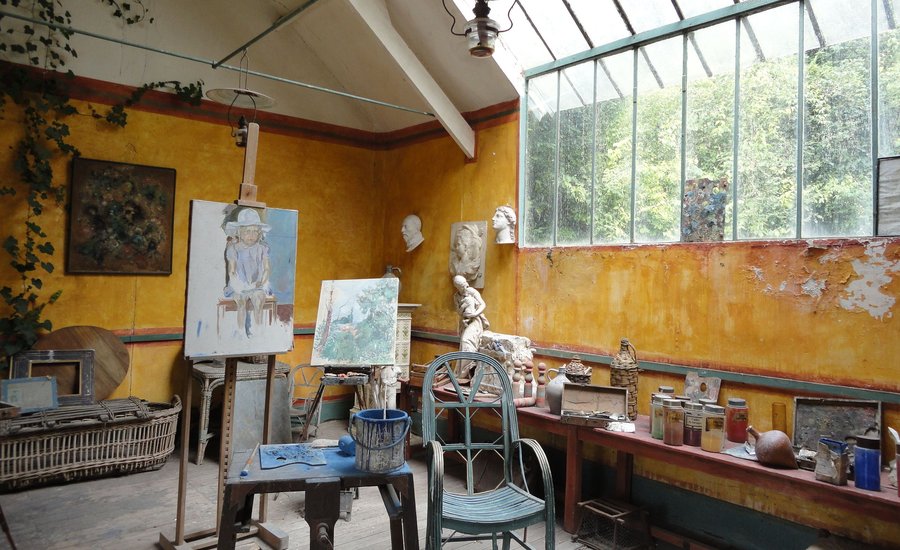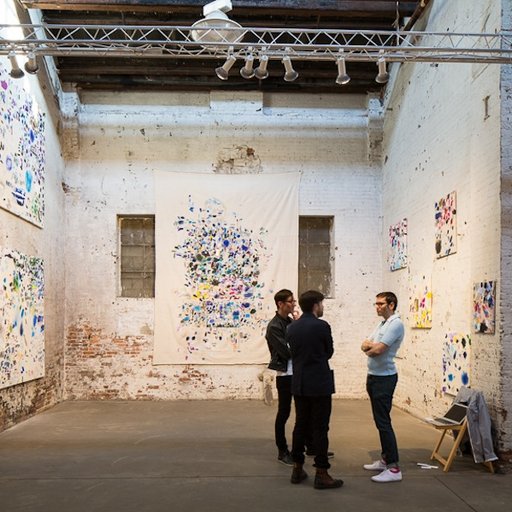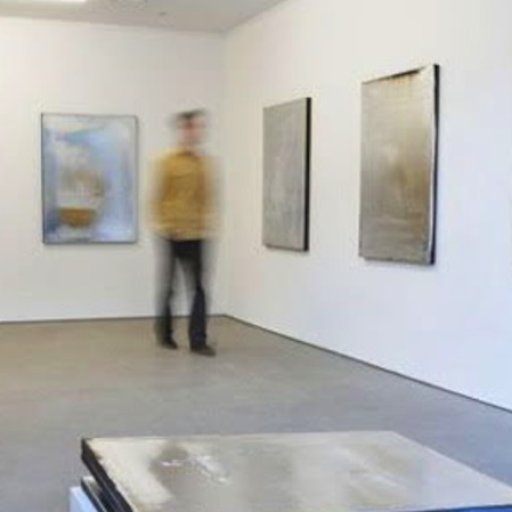It's back to school season! And for those studying art, it means spending all that money you earned at your summer job on art supplies for the semester. In this helpful guide, we'll share some money-saving studio hacks that will get you through the school year without maxing out your credit card. And only one tip involves dumpster diving!
Tip #1: Never Buy A Canvas From Blick...
...or any art supply store for that matter. Buying a pre-stretched, gessoed canvas is expensive—and the less canvases you have to experiment on, the more pressure you'll put on yourself to "ace" each one. Every graduate knows that the best way to make a good painting is to first make 100 bad paintings. Art supply stores also buy individual stretcher bars, which you can mix and match to make whatever dimension canvas you want—you just need to put the canvas on yourself. But the cheapest (and most satisfying option) is to build your own canvas using hardware-store-bought wood and drop canvas (the kind housepainters use to protect the floor).
You'd also be surprised by the variety of canvas sizes you can find at your local thrift store, usually for under $5 (apparently the market for another person's drink and draw masterpiece is close to nil). So long as you don't mind painting over another artist's work, The Salvation Army can end up saving you hundreds of dollars on canvases. Just make sure you have enough gesso and sandpaper to refinish the surface.
Tip #2: All Hail the Hardware Store
If you end up going the DIY route and decide to build your own surfaces, the hardware store will usually have all the supplies you need for a fraction of the cost. It usually won't be as refined as the materials at an art supply store but nobody's going to see those stretcher bars anyway. Plus, they carry tape, glue, brushes, and all those other normal-people materials that you'll most likely benefit from having handy in the studio—again, for a fraction of the cost. Clamp lights are great to have around too. They'll come in extra handy when you're documenting your work.
Tip #3: Tube Wringer's Rule!
A tube wringer does what it sound like it does—it methodically squeezes paint from the bottom of the tube, preventing you from wasting single drop. And if you later decide painting just ins't your medium, they're also great for toothpaste! Here are a million options, ranging from all-metal and heavy-duty to little plastic thingies. We recommend the Richeson because it's cheap, durable, and gets the job done.
RELATED ARTICLE: 11 Things to Know About Succeeding in Art School (Or Avoiding It Altogether)
Tip #3: Hire A Classmate Before A Professional
If the idea of fabricating your own materials is too intimidating (or if you really just can't be bothered), there's no shame in hiring one of your more technically proficient classmates to do the job for you. Need a pedestal made of wood or a frame for your photo? Your fellow students will most likely jump at the opportunity for some extra pocket money, and you'll save a fortune by avoiding a professional service. A good place to start is by going to the student employees working at your school's wood, metal, ceramic, and print shops.
Tip #4: Rub Elbows With the Shop Techs
Speaking of shop techs, know that they are the unsung guardian angels of your program. They hold the key to a near-infinite supply of knowledge and resources. But not only can they help you figure out exactly how to build that thing that you need, but they will almost always have a large store of scrap supplies on hand for you to use... if they like you. Ask (nicely) and ye shall receive.
Tip #5: Get a J-O-B
Yes, get a job—but one with the right benefits. Working at art supply stores will get you a pretty nice employee discount; Blick offers employees 30% off, and Artists and Craftsman offers 40% off. Working as a shop assistant at school is also a great work-study opportunity. Not only will you get hands-on experience helping your fellow students, you will also have first dibs on all scraps and abandoned supplies.
Tip #6: Find Your Local Art Supply Donation Center
These centers recycle donated art supplies, typically for cheap or for trade. If a Google search is coming up empty, ask a professor. This incredible website has a state-by-state list of donation centers with brief descriptions for each. If you're in New York, TurnUp Art is a new donation program started by a former Pratt student that works directly with institutions to upcycle supplies.
Tip #7: Use Some Student Loans to Invest in Equipment
There will come a time when you graduate and realize how lucky you were to have access to your school's shops and the tools and equipment within them. After school, you'll find it is incredibly difficult (and expensive) to rent time at wood shops, print shops, ceramic studios etc. So before you graduate, think about using some of your loan money (if you have some) on buying the equipment or tools you rely on on a daily basis.
RELATED ARTICLE: About to Graduate Into the Art World? Here are 11 All Important Things to do Before Leaving Art School
Tip #8: Use Commercial Printers
If your school doesn't have access to large format printers (or if they do but they're pricey), you can usually find a commercial printing service that will do the job for cheap. In New York, your best bet is in Chinatown where a plethora of small-scale printers who normally produce menus, vinyl banners, and advertisements could probably do what you need. Again, if you're in New York and in need of regular photo film development, Kubus in Greenpoint is really cheap and great quality. You can also hire a photography major to develop them for you.
Tip #9: Have a Hook for a Hand?
If you need software on your computer like Adobe Creative Suite (students do get a discount but it's still very expensive), you could do that thing on the internet that you arrrrrhhh-en't supposed to do where you download a torrent that's a bootleg copy—for free. But don't, because it's illegal. But if you do (don't), and you need help, you could Google it or ask a friend. But don't. Or do—but we didn't tell you to.
Tip #10: Don't Buy Books! Rent Them
E-Books are also a great option if you have the Midas touch but instead of gold it's like... marinara sauce and coffee. Websites like Chegg should have every book on your syllabus available in both e-book and IRL format.
Tip #11: Dumpster Diving (2.0)
Like we promised, we're only suggesting this once but the key to good dumpster diving is timing and location. Every upperclassman knows that the dumpsters and curbs outside of dormitories on move-out days are a seasonal treasure trove. Offices also tend to get rid of printers pretty frequently. Craigslist's "Free" section and Freecycle are also always available for a good browse during that seminar class you always fall asleep in.
Tip #12: Ramen Tastes Alright with Sriracha
¯\_(ツ)_/¯
RELATED ARTICLE: How to Nail the Studio Visit: Expert Advice on What Artists Should Do (and Not Do) to Make an Impression, Part 1
























